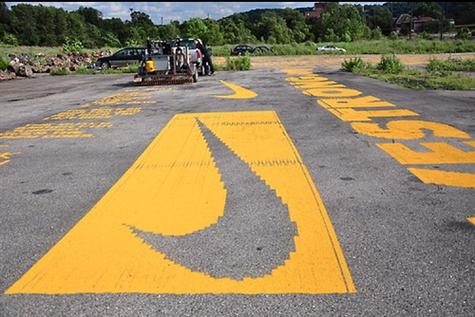For those who watched the Tour de France, you may have been pleasantly surprised to see some cool tech. Nike was using a robot to paint pictures on the street in chalk dot matrix style. It was accepted by the general public as new and innovative, as well as generally cool. In the hacker community though, a bit of trouble began to brew. The Chalkbot bears more than a passing resemblance to a project called GraffitiWriter. GraffitiWriter was a bot initially designed to protest the militarization of robotics. As it turns out, one of the early developers of the GraffitiWriter is behind the Chalkbot in a legitimate contract. The trouble doesn’t seem to be one of intellectual property legalities. People are mad at the corporatization of public work. They want kids watching to know that this system was designed by regular people in their spare time at their homes, not by a team of researches in a secret underground Nike laboratory.
The article takes a bit of a turn and talks some about the possibility of projects being taken and used for corporate advertisement. The specific item they are talking about is the Image Fulgurator which secretly projects images on objects in your photographs. You’ll have to go check that one out to see how it works.















